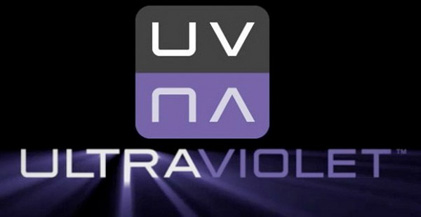Top 12 Film Industry Stories of 2012: #11
Ultraviolet Spectacle
By David Mumpower
January 2, 2013
In last year’s Film Industry Stories, we anecdotally mentioned the arrival of a potential heavyweight in the cloud storage marketplace. The announcement of Ultraviolet occurred in 2010 but the first two movies didn’t debut until the winter of 2011. This past year has been the first true mainstream test in the wild for Ultraviolet. The results have been predictably inconsistent. Ultraviolet’s fate is yet to be determined. The Ultraviolet events of 2012 were noteworthy on several levels, though.
For those of you who are unfamiliar with Ultraviolet, the concept is simple. A consortium of movie distributors have joined together to create a movie cloud service. Via the cloud, consumers gain permanent access to their film library via any platform. Ultraviolet’s mantra is “Buy Once, Play Anywhere.” There are apps that enable Ultraviolet usage on computers, tablets and smartphones. Smart Televisions and videogame consoles also have the same capability. Ultraviolet is like Netflix in this regard. The key difference is that the consumer seeds their cloud with the movies of their choice.
The idea is to create a film version of iTunes without having to deal with Apple’s legendary control issues. Yes, iTunes still sells the same digital licenses for feature films as Ultraviolet. Those are not Ultraviolet purchases, though. Effectively, the Apple licenses exist outside the purveyance of the movie studios themselves. If you are confused as to why, you have joined the rest of the civilized world in wondering about the madness of digital rights.
Who runs Ultraviolet? Five studios are the power players in this collective. They include Paramount Pictures, Warner Bros. Pictures, Columbia Pictures (aka Sony), Universal Pictures and 20th Century Fox. Notable by its absence is the most powerful studio of all, Walt Disney Pictures. This brings us to sunny point number two about Ultraviolet. Not only is Apple currently eschewing participation but Disney has also chosen to create a competing cloud endeavor. Ultraviolet wants to be the presumptive choice for non-theatrical movie consumption. Its early attempts to corner the market have been erratic at best.
At its core, Ultraviolet is an attempt by studios to eliminate the middleman. When a movie is released into theaters, exhibitors split the revenue with the distributor. When a movie is released on home video, revenue is shared with the store facilitating the transaction. A perfect digital distribution system, on the other hand, would have only the financial outlay for transactional expenses and digital storage/ & maintenance. Every other penny would be pure profit. This is exactly why five of the six major studios have banded together on Ultraviolet.
At the start of 2012, exactly 19 Ultraviolet titles were available. Depending on perspective, there are either several hundred or several thousand at the end of the 2012. How did Ultraviolet expand its library so quickly? The first step was to include digital licenses in most mainstream releases.
To the consortium’s credit, there was no cherry-picking of middling titles. Heavyweight blockbusters such as The Hunger Games, The Amazing Spider-Man and The Dark Knight Rises were all available for instant streaming at the same time they were released on home video. Purchasing the DVD or Blu-Ray of a title would provide the consumer with a coinciding digital copy. DVDs include standard definition digital licenses while buying a Blu-Ray entitles the user to a 1080p digital license, thereby virtually negating the need for the physical media.
Continued:
1
2
|
|
|
|




